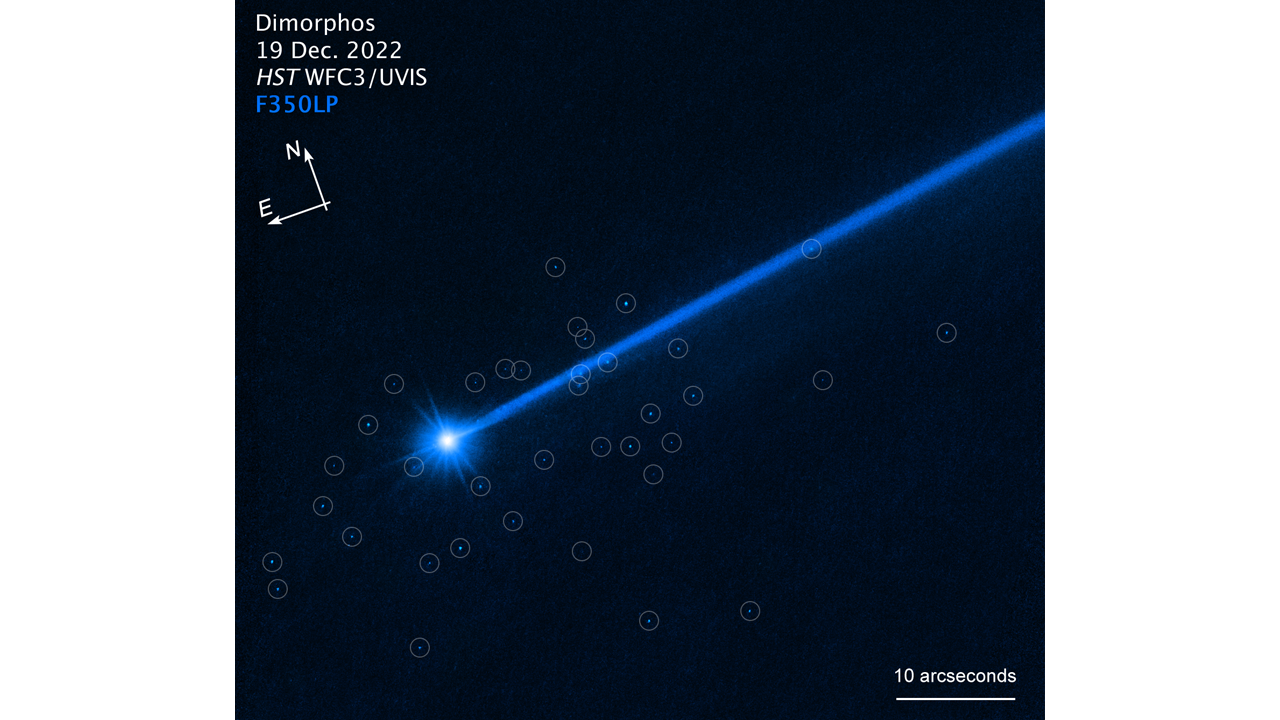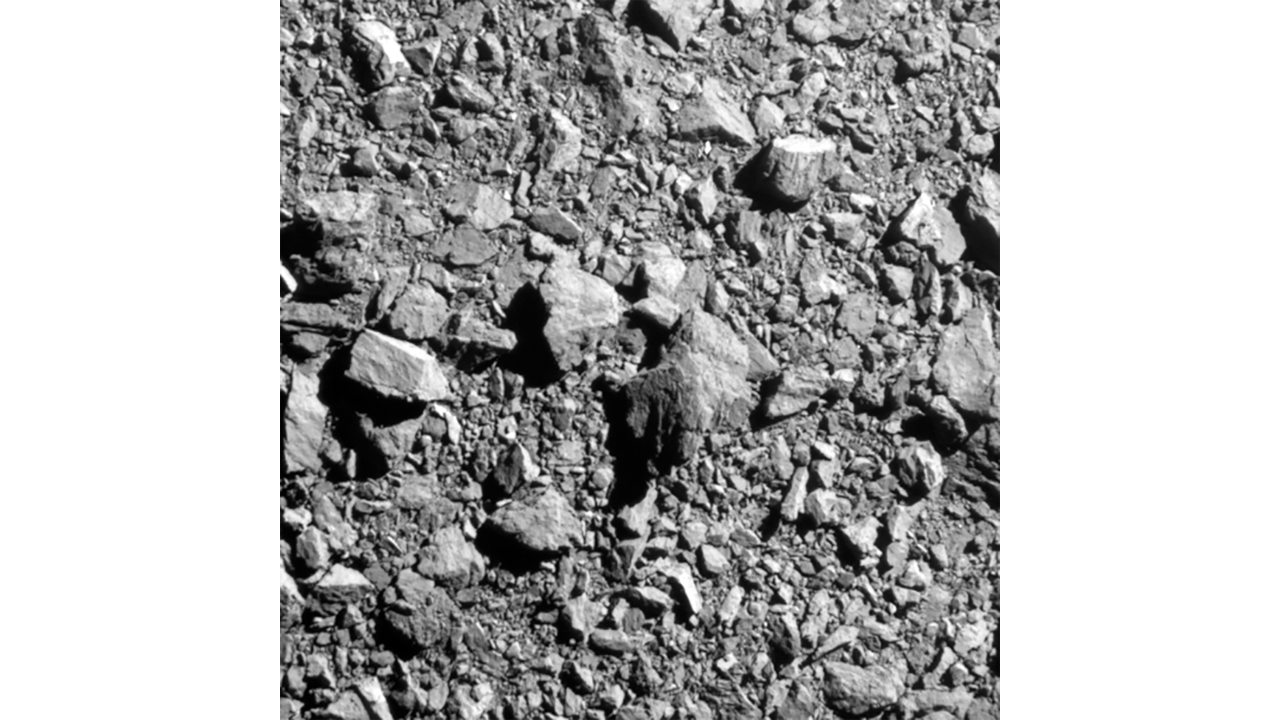In further evidence asteroids are not as tough as they seem, the Hubble Space Telescope has spotted large rocks escaping from Dimorphos after it was hit by the DART mission. Although we only have a sample of one, this adds to a picture of asteroids being only weakly bound together, making them vulnerable to human interference.
Last year, NASA smashed a space probe into the small asteroid Dimorphos. This particular asteroid was chosen not only because it is close to Earth, but because it orbits a larger body, Didymos, making it easy to measure the effects of the impact.
The mission, named Double Asteroid Redirection Test, or DART, hit Dimorphos at 6.7 kilometers per second (14,000 miles per hour) and shifted its orbit by 33 minutes, substantially more than expected. It also produced a trail of dust observed by both Earth-based telescopes and Hubble. That wasn’t the end of the story, however, even if most people’s attention moved on. Hubble has continued to monitor Dimorphos on occasion, and recent observations reveal the impact raised more than dust.
Scientists have counted 37 rocks drifting away from Dimorphos in images taken since the impact, ranging in size from 1 to 7 meters in diameter (3-22 feet). Rather than settling back on the asteroid, they are slowly drifting away – so slowly their average speed of 0.3 meters per second (0.7 mph) has been compared to that of giant tortoises. Nevertheless, that is just barely enough to achieve escape velocity from the combined gravity of the two asteroids.
“This is a spectacular observation – much better than I expected. We see a cloud of boulders carrying mass and energy away from the impact target,” said Professor David Jewitt of UCLA in a statement. “The numbers, sizes, and shapes of the boulders are consistent with them having been knocked off the surface of Dimorphos by the impact.” The observations were also a technical triumph, with Jewitt noting; “The boulders are some of the faintest things ever imaged inside our Solar System.” Distinguishing objects this dim from cosmic rays hitting the Hubble telescope was a significant challenge.

Dimorphos, with a bluish dust tail extending diagonally to the upper right. The circles pick out boulders to help distinguish them from background stars and pixels triggered by cosmic rays.
Image Credit: NASA, ESA, David Jewitt (UCLA) Image Processing: Alyssa Pagan (STScI)
The European Space Agency’s Hera mission is scheduled to visit Dimorphos and Didymos in 2026 to conduct a post-impact survey of Dimorphos. “The boulder cloud will still be dispersing when Hera arrives,” said Jewitt. “It’s like a very slowly expanding swarm of bees that eventually will spread along the binary pair’s orbit around the Sun.”
The team think DART didn’t so much break Dimorphos up to create the boulders as knock off those already lying loose on the surface.

A 30-meter-wide (98-foot) patch of the asteroid from the last complete image of Dimorphos, as seen by DART two seconds before impact.
Image Credit: NASA, APL
The disruption even made Dimorphos ever so slightly less threatening, should it one day hit Earth, as the combined mass of those escaping is estimated to be 0.1 percent of the pre-impact asteroid.
However, we are going to need a larger sample before we can assume asteroids can be degraded through repeated impacts, in the unlikely event this was considered a better approach than deflection. It is thought Dimorphos formed out of material shed by Didymos in a collision or when its rapid spin was even faster. If so, the smaller asteroid may be a looser pile of rubble than other space rocks.
The observers would love to know the process that lifted the boulders off the surface, which they hope to resolve by establishing each rock’s path. Alternatively, we might decide to do it all again, this time with a second spacecraft nearby to record the whole thing.
The findings are published in The Astrophysical Journal Letters.
Source Link: DART Mission Didn’t Just Move Dimorphos, It Made It Shed Boulders